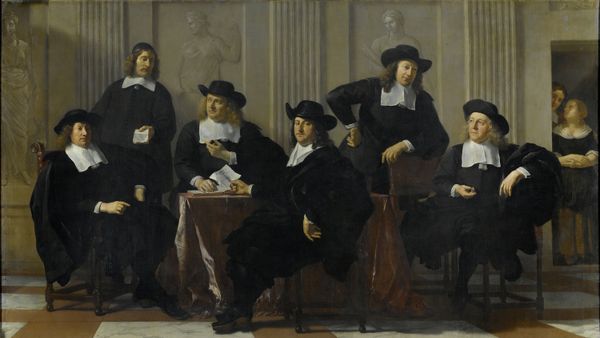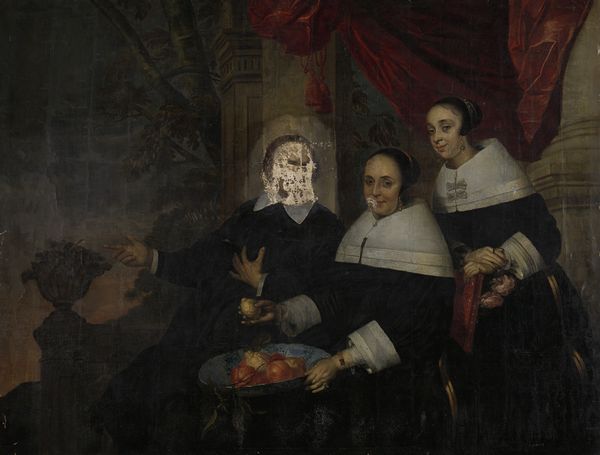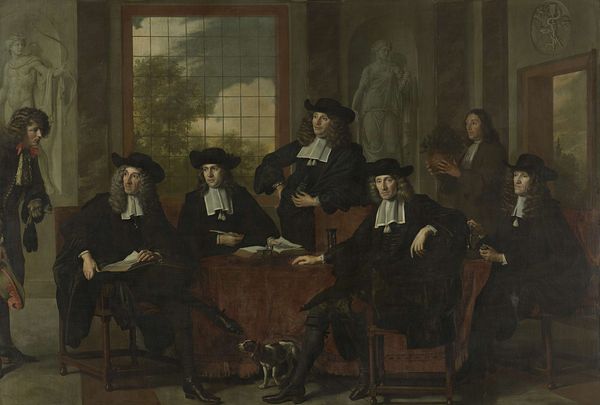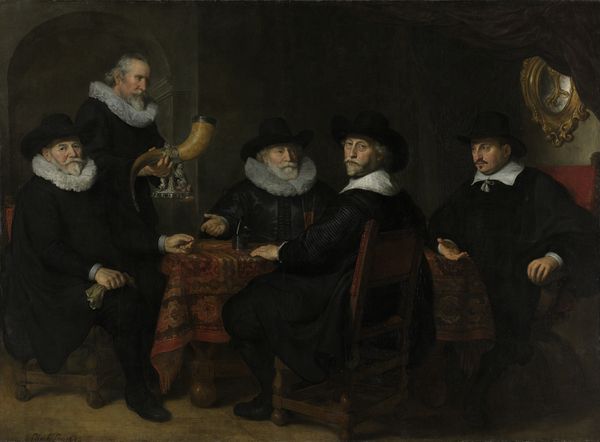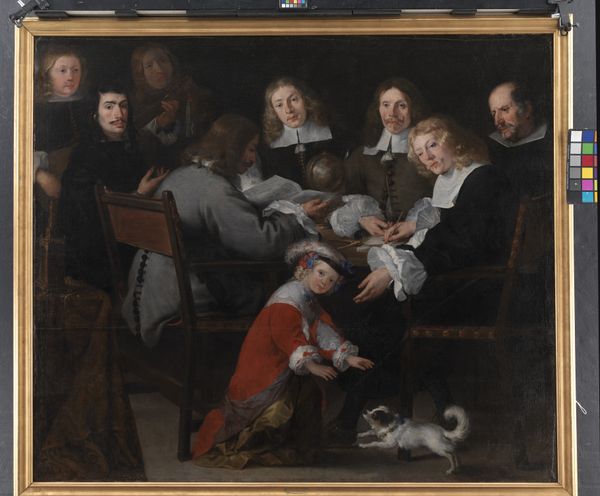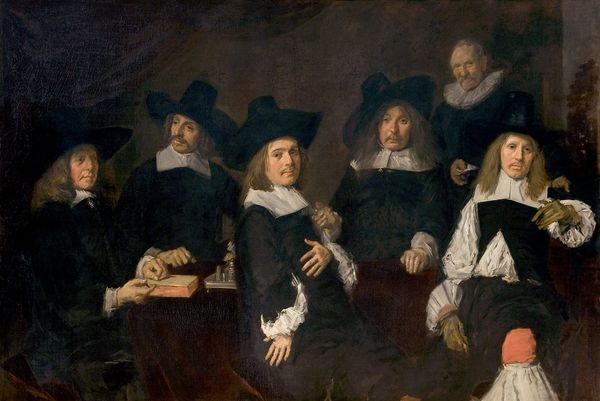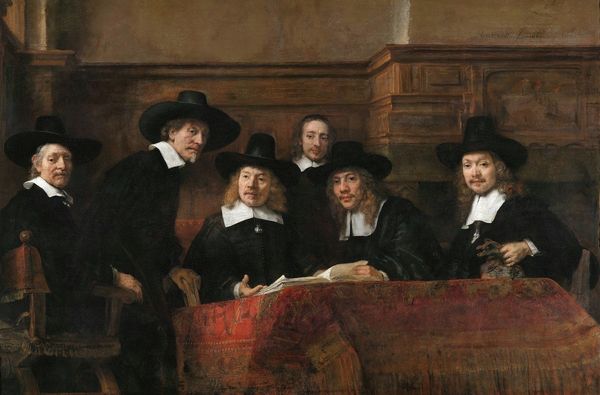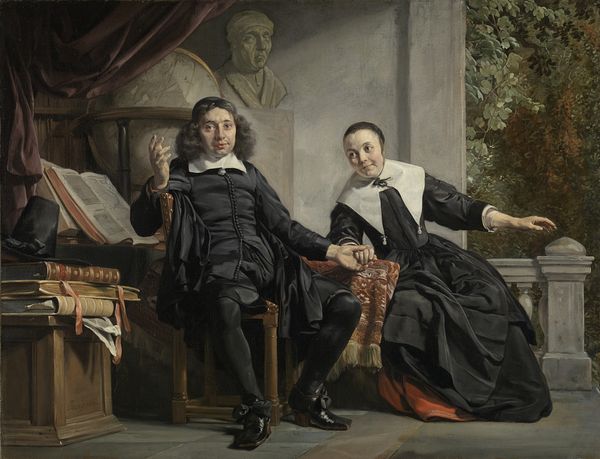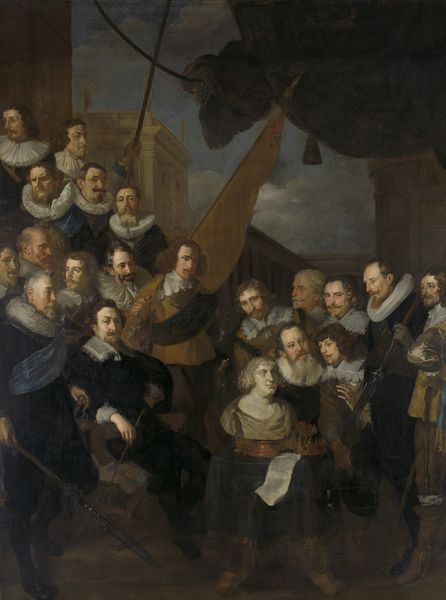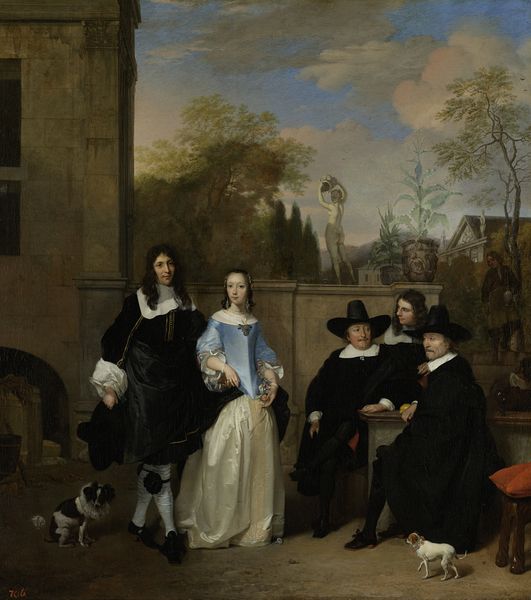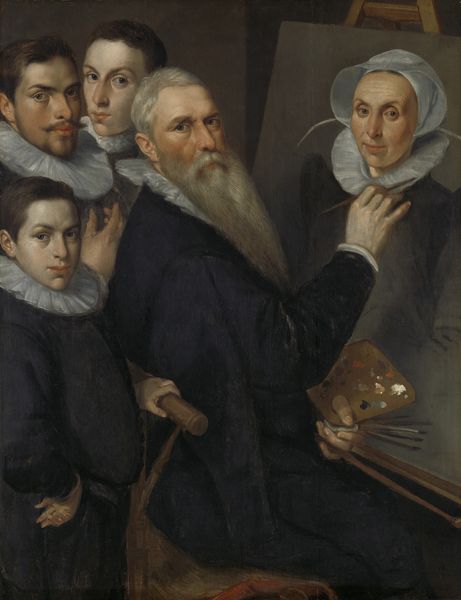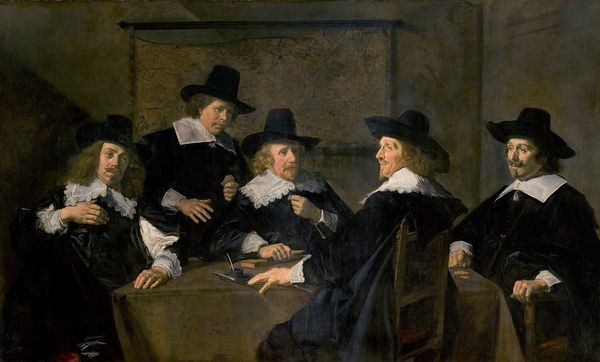
painting, oil-paint
#
portrait
#
baroque
#
dutch-golden-age
#
painting
#
oil-paint
#
group-portraits
#
genre-painting
#
history-painting
Dimensions: height 130 cm, width 184 cm, depth 8.5 cm
Copyright: Rijks Museum: Open Domain
Curator: I’d like to draw your attention to "The Governors of the Guild of St Luke, Haarlem, 1675," a group portrait rendered in oil on canvas by Jan de Bray. It's currently housed here at the Rijksmuseum. Editor: Immediately, what strikes me is the stark contrast—dark garments punctuated by those bright, almost luminous, white collars. The composition feels carefully constructed, almost staged. Curator: Indeed. Understanding the social structure of guilds during the Dutch Golden Age is crucial here. De Bray depicts these men, these governors, as representatives of a powerful economic and social institution. Editor: I see the compositional lines now, drawing my eye towards the center. The way the figures are arranged—some leaning in, others more reserved—creates a palpable sense of both unity and individual character. And that lighting, it's very strategic, highlighting key figures. Curator: And it is also interesting to examine the historical backdrop here. These guilds weren't just about art, they were about controlling who could practice, about enforcing standards. It’s all interwoven into Haarlem’s complex political and economic ecosystem of the time. They reflect an intersection of wealth and artistic influence, all concentrated in male hands. Editor: Yes, the way he uses that dramatic chiaroscuro emphasizes their authority, those stern yet controlled expressions speaking volumes. The impasto too, especially noticeable in those crisp white collars, lends the piece a tangible quality. Do you see the symbolism behind the tools held? Curator: Of course. Each attribute offers us another angle of perspective. The guild was essentially gatekeeping the artistic landscape in a very segregated Haarlem. The objects, the composition, they solidify an assertion of identity, position, and privilege. Editor: I’m also taken by the balance—the contrast in color creates harmony, but there's an intriguing asymmetry in how each face is rendered, each with unique planes. A dance of light and shadow which elevates it. Curator: Exploring how societal structures can determine who gets to create, who gets celebrated, that’s one layer of engagement here. This painting offers a critical lens on artistic creation during a pivotal era of economic expansion and also rigid societal norms. Editor: Ultimately, it’s the artist’s command over form and light that truly captivates. The meticulous detailing invites endless exploration. Curator: Absolutely. The history of the Guild of Saint Luke—as both champions and regulators of art in their society—certainly sparks conversation around our present realities as artists, institutions, and critics in today's contemporary art scene.
Comments
No comments
Be the first to comment and join the conversation on the ultimate creative platform.

